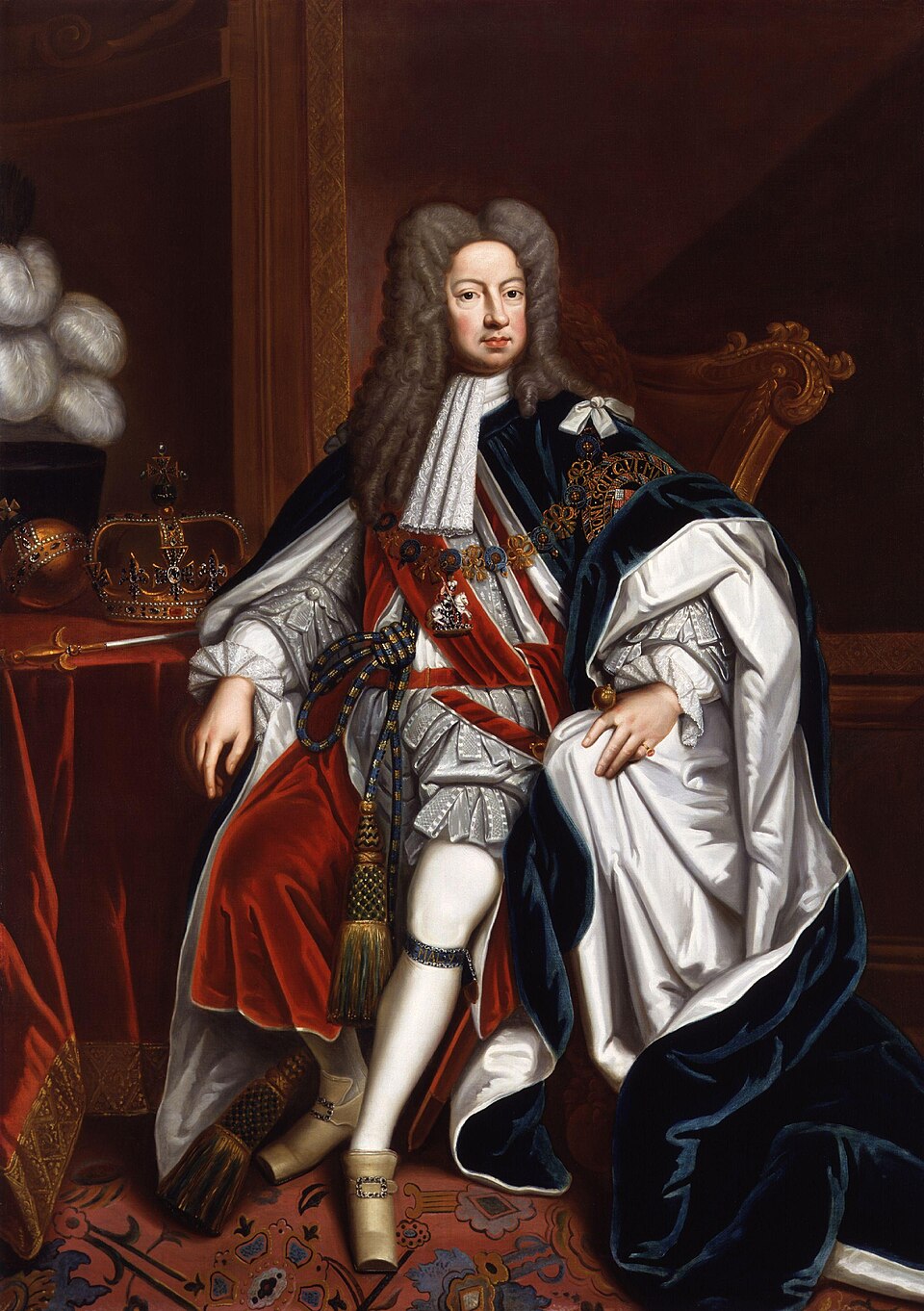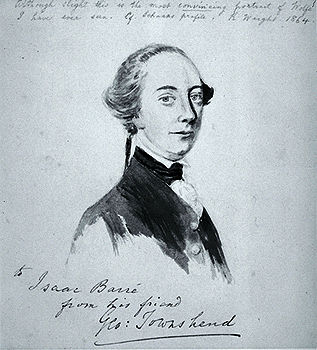George II, king of Great Britain and Ireland and elector of Hanover from 1727 to 1760 (born 10 November 1683 (30 October 1683, Old Style) in Hanover, Germany; died 25 October 1760 in London, United Kingdom). King George II was the last British monarch to personally command troops on the battlefield. He expanded the British military presence in North America, supporting the promotion of James Wolfe during the Seven Years’ War. George II approved the founding of “a civil government in the province of Nova Scotia” and the construction of Halifax, Nova Scotia.
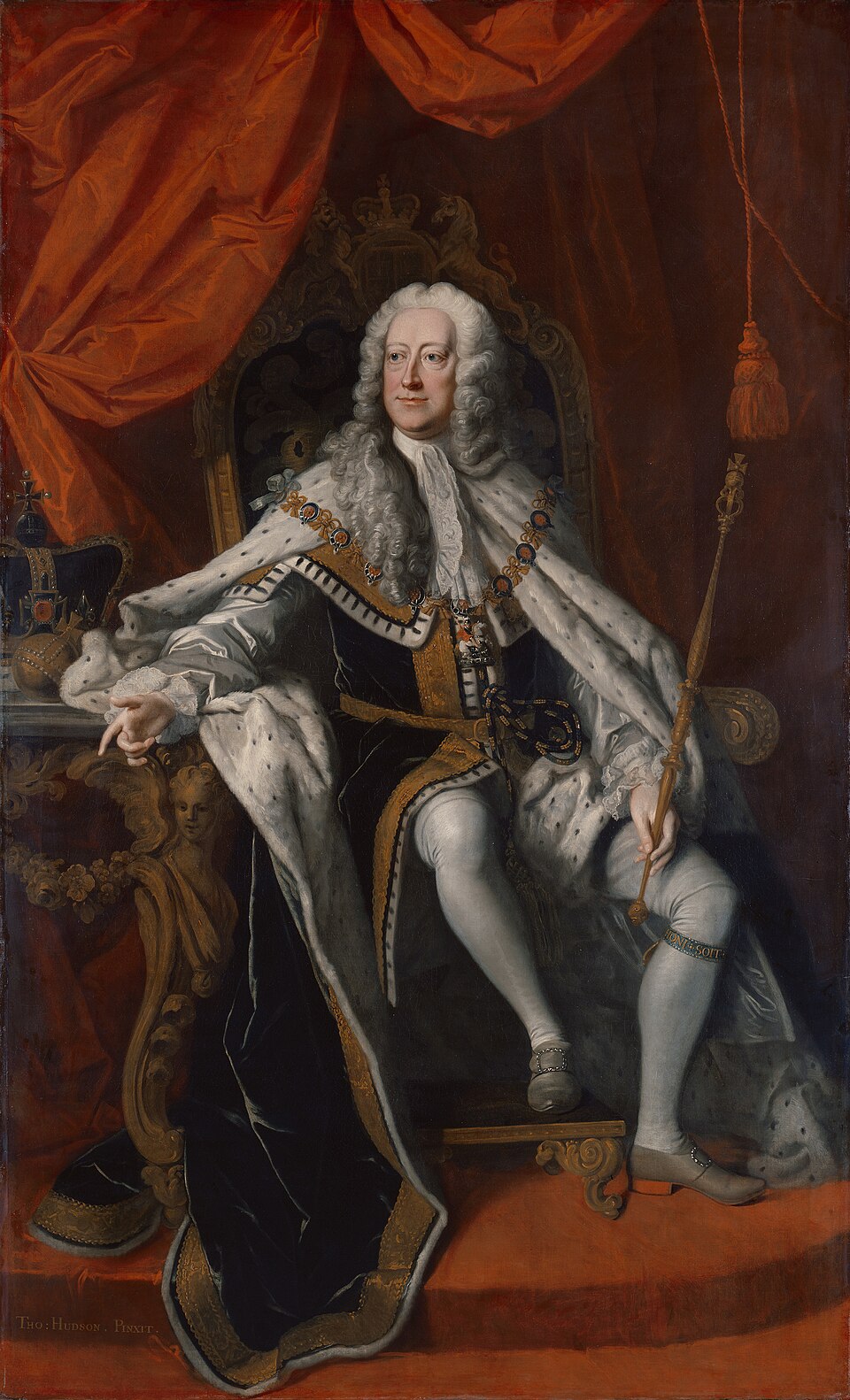
Early Life
Georg August (George Augustus) was the only son of Georg Ludwig, elector of Hanover and the future King George I of Great Britain and Ireland (1660–1727), and Sophia Dorothea of Celle (1666–1726). In 1694, when Georg August was 11 and his younger sister Sophia Dorothea (1687–1757) was seven, his parents’ marriage was dissolved. He was not permitted to see his mother again — circumstances that led to a lasting estrangement from his father. In 1701, the English parliament declared that the succession would pass to the Protestant descendants of Sophia of Hanover, Georg August’s paternal grandmother and a granddaughter of King James I of England, following the death of Queen Anne. In 1706, Georg August received the British titles of Duke of Cambridge, Earl of Milford Haven, Viscount Northallerton and Baron Tewkesbury.
Did you know?
When George II was born, Britain was still using the Julian calendar. In 1752, while he was king, the country switched to the Gregorian calendar, subtracting 11 days from that year to align the two systems. Most sources adjust his birthdate (10 November 1683, “New Style”) but some use the date recorded at the time (30 October 1683, “Old Style”). For more information about this change, see our article on Calendars.
Marriage and Children
On 22 August 1705, Georg August married Princess Caroline of Brandenburg-Ansbach. They had eight children: Frederick, Prince of Wales (1707–1751); Anne, Princess Royal and Princess of Orange (1709–1759); Princess Amelia (1711–1786); Princess Caroline (1713–1757); Prince George William (1717–1718); Prince William, Duke of Cumberland (1721–1765); Princess Mary (1723–1772); and Princess Louisa (1724–1751).
Caroline was well educated, with strong interests in literature, science and philosophy. She exercised significant cultural and political influence during the reigns of her father-in-law, George I, and husband, George II. When Caroline died in 1737, George II was devasted and swore that he would never remarry, declaring that he would have mistresses.
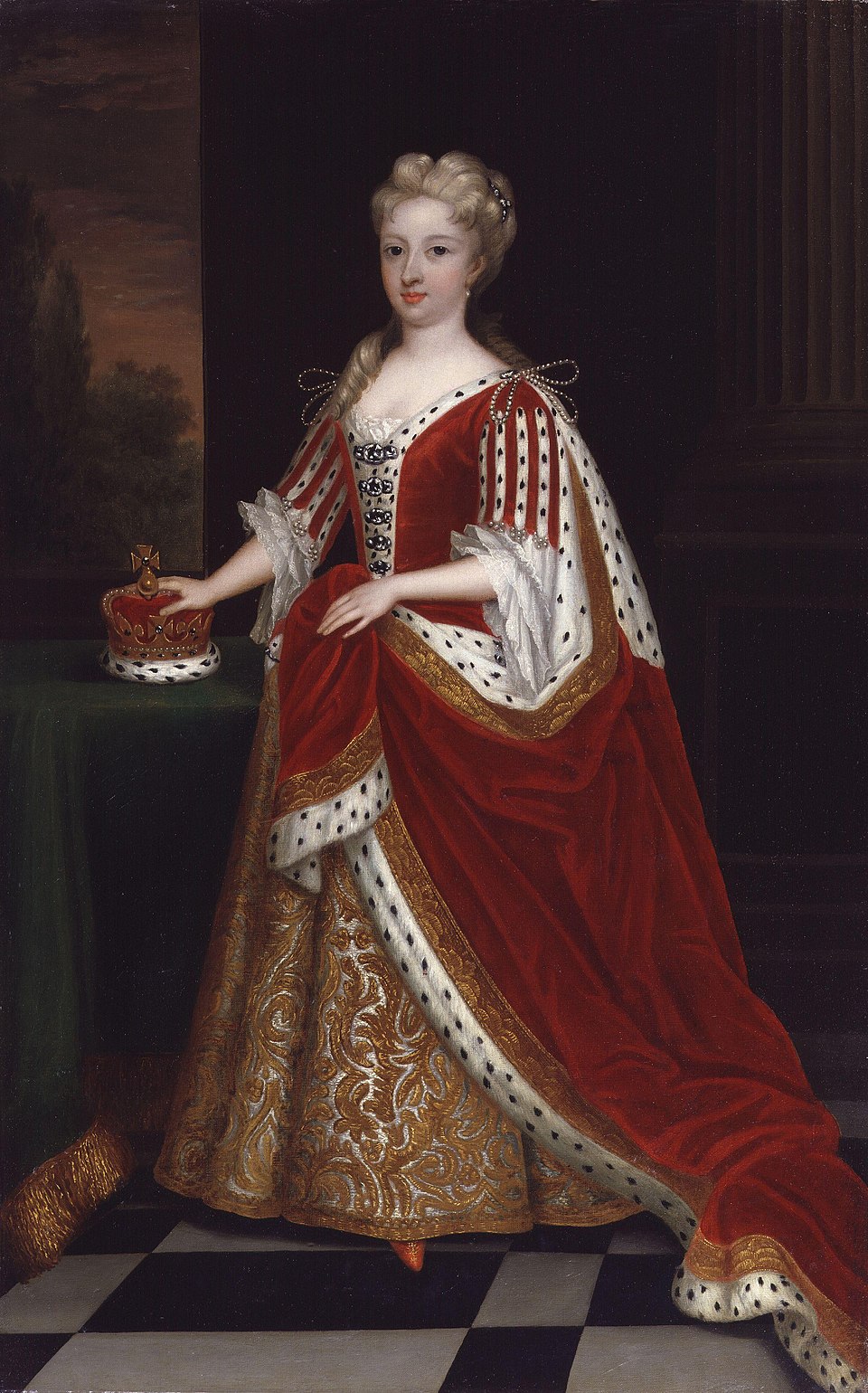
Prince of Wales
In 1714, George I succeeded to the thrones of Great Britain and Ireland. Georg August became the Prince of Wales and accompanied his father to London. He and Caroline left behind their eldest son, Frederick (then only seven years old), to represent the family in Hanover.
The relationship between the King and the Prince of Wales continued to deteriorate. Following a quarrel at Prince George William’s christening in 1717, George I took custody of his grandchildren, and the Prince of Wales blamed his father when the infant prince died soon after. The future King George II became involved in party politics, encouraging his father’s political opponents to gather at his London home, Leicester House.
Accession to the Throne
On 22 June 1727 (11 June 1727, Old Style), King George I died on a trip to Hanover and was succeeded by his son as King George II. For his coronation at Westminster Abbey on 22 October, George II commissioned four new anthems by the composer George Frideric Handel, including “Zadok the Priest,” which was performed at the coronations of Queen Elizabeth II and King Charles III. George II acknowledged the expanding British empire in a speech closing his first parliament, observing the “improvement of Trade and Commerce, which have greatly increased our Wealth and Power and given us that Respect and Influence Abroad…has so much advanced the Glory and Happiness of this Nation.”
Did you know?
Point Frederick and Fort Frederick in Ontario and Fort Frederick in New Brunswick are named after George II’s eldest son, Frederick, Prince of Wales. The king and queen had a stormy relationship with Frederick, who had spent much of his childhood in Hanover without his parents. Frederick predeceased his father, dying in 1751. His son would succeed to the throne in 1760 as George III.
King George’s War
As the king of Great Britain and elector of Hanover, George II was allied with Austria against France and Prussia in the War of the Austrian Succession (1740–1748), which was known as King George’s War in North America. At the Battle of Dettingen in 1743, George II became the last British monarch to personally command troops on the battlefield. In North America, British troops seized and destroyed the walls of Louisbourg in 1745. According to the terms of the 1748 Treaty of Aix-la-Chapelle, Great Britain returned Île-Royale (now Cape Breton Island) and Île Saint-Jean (now Prince Edward Island) to King Louis XV of France in exchange for Madras in India.
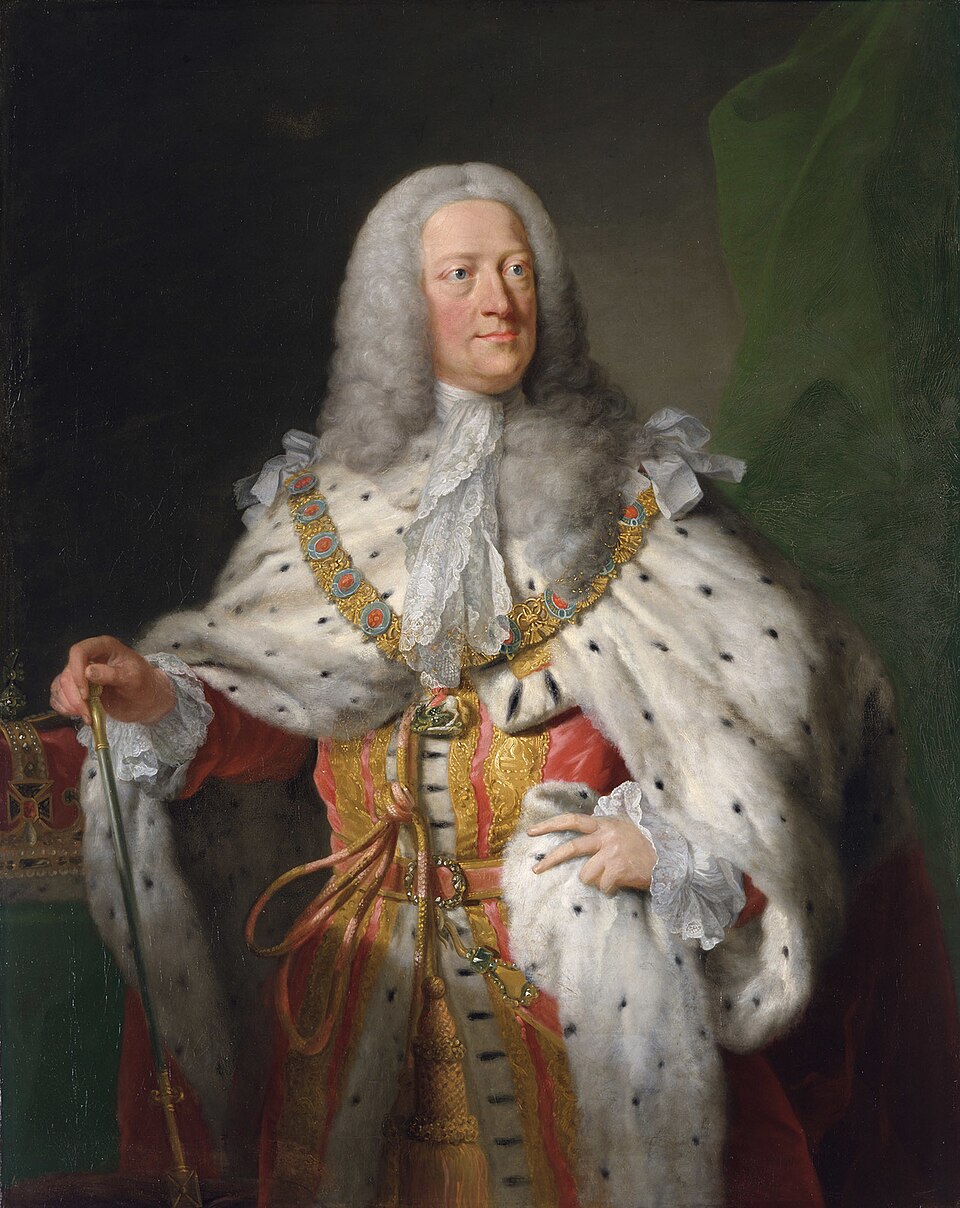
Nova Scotia
The return of Louisbourg to France threatened the security of British territory in Nova Scotia. On 7 March 1749, the British Lord Commissioners for Trade and Plantations proposed to King George II to establish “a civil government in the province of Nova Scotia.” A notice in the London Gazette called for veterans of the War of the Austrian Succession, as well as skilled craftspeople and their families, to join the expedition. In 1749, Halifax, Nova Scotia, was founded by Colonel Edward Cornwallis and some 2,500 settlers. That year, George II issued a proclamation founding St. Paul’s Anglican Church, the oldest building in Halifax and the oldest existing Anglican place of worship in Canada. Nova Scotia was defended by three British regiments, and George II supported dispatching another two Irish regiments under the command of Edward Braddock in 1754. Fort George (also known as the Halifax Citadel), George Street, Halifax, and Georges Island (where Acadians were held for deportation between 1755 and 1764) are named after George II.
Quebec
In 1756, George II, concerned with the security of Hanover, allied with his nephew Frederick the Great of Prussia against Austria and France in the Seven Years’ War (1756–63). The conflict was part of the French and Indian Wars in North America. George II was impressed by James Wolfe’s service as an officer at the fall of Louisbourg in 1758 and supported his promotion to brigadier general in North America. He overrode the objections of the prime minister, the Duke of Newcastle, who considered Wolfe to be too impulsive and too junior-ranking to command the invasion of Quebec. When the Duke of Newcastle protested, “The man’s mad, Your Majesty,” George II replied, “Oh! He is mad, is he? Then I wish he would bite some other of my generals.”
The king lived long enough to receive news of Wolfe’s victory and death at the Battle of the Plains of Abraham and the fall of Quebec to British forces in 1759. He also commissioned a monument to Wolfe in Westminster Abbey, which would be completed in 1772. George II died of an aortic dissection in 1760 — the first example of this condition to be diagnosed in detail. Since George II’s eldest son, Frederick, had predeceased him, he was succeeded by his grandson, who became King George III.

 Share on Facebook
Share on Facebook Share on X
Share on X Share by Email
Share by Email Share on Google Classroom
Share on Google Classroom
